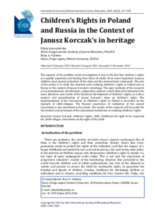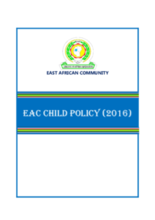Demographic Data
|
Sources: World Bank, UNICEF, UNDP HDR 2015, DHS 2011 |
Displaying 10961 - 10970 of 14390
The Transitioning to Family Care for Children Tool Kit is an online resource developed by the Faith to Action Initiative for churches, faith-based organizations, donors, and others seeking to transition their care and support of children away from a residential model of care (e.g., institutions, orphanages, children’s homes, group homes) to care within families.
The State of the Ugandan Child: An Analytical Overview focuses on four thematic areas, namely: health and nutrition, education, child protection and child participation; with emphasis placed on the girl child.
The Transformative Monitoring for Enhanced Equity (TransMonEE) Database, established in 1992 by the UNICEF Innocenti Research Centre, captures a vast range of data relevant to social and economic issues relevant to the situation and wellbeing of children, young people and women in Eastern Europe and Central Asia. The 2016 database includes data on children in alternative care for Eastern and Central Europe and Central Asia, as well as data on child protection, social protection, and other topics.
The purpose of this chapter of The United Nations Convention on the Rights of the Child: Taking Stock after 25 Years and Looking Ahead, is to outline the importance of children’s rights monitoring of (international) institutions such as the ICC and to introduce a measurement matrix for undertaking such monitoring.
This chapter from the book The United Nations Convention on the Rights of the Child: Taking Stock after 25 Years and Looking Ahead, presents the legal framework and public policies that address violence against children in ten South American countries.
This is an explorative study undertaken in central and south part of the Mumbai with the objective of investigating socio-economic, demographic and cultural characteristics of street adolescents in Mumbai.
The aim of this article is to study the situation on realizing children’s rights in Poland and in Russia in the context of Janusz Korczak’s principles.
The EAC Child Policy is the culmination of various processes geared towards the harmonisation of standards on and approaches to the implementation of child rights in the EAC.
Este documento pretende impulsar un cambio en el paradigma de la institucionalización como respuesta a la situación de los niños, niñas y adolescentes privados de cuidados familiares.
Due to poverty and military conflicts in the east, the number of children in institutional care in Ukraine has increased.






